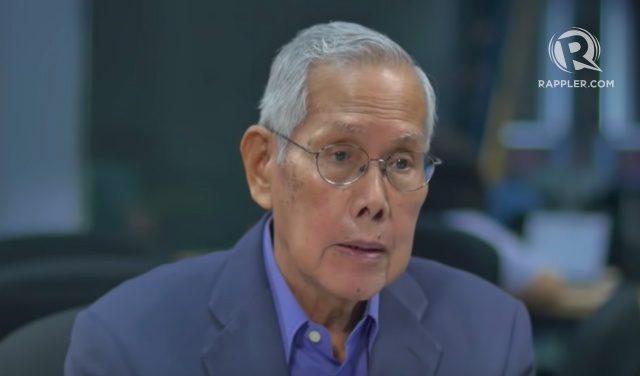SUMMARY
This is AI generated summarization, which may have errors. For context, always refer to the full article.

MANILA, Philippines – If the proposal to create 4 high courts is followed, it will result in a weaker check and balance system, retired Supreme Court (SC) associate justice Vicente Mendoza warned.
In a Rappler Talk on Wednesday, August 15, the former justice said it should not simply be a question of reducing the backlog of the court as it is more important to preserve the role of the SC in the judicial system.
“What’s the use of relieving the court of its backlog if it loses its soul, its prominence in government?” he told Rappler editor-at-large Marites Vitug.
The draft constitution proposed by the Consultative Committee (Con-Com) plans to create 4 high courts “to make the system of justice more efficient.“
This means the current system established under the 1987 Philippine Constitution will be overhauled and replaced by the Federal Supreme Court, Federal Constitutional Court, Federal Administrative Court, and Federal Electoral Court. (DOCUMENT: Final version of Consultative Committee draft constitution)
But Mendoza highlighted the importance of having the “One Supreme Court” in dealing with other branches of the government.
“You’re going to reduce them and you’re going to impoverish the judicial process in the whole,” he said.
Mendoza also said that he was not consulted by the Con-Com.
“No, I was never asked,” he said. “I’m not aware of anyone invited by them during the course of their study.”
‘Limited jurisdiction’
The draft constitution submitted to Congress states that the Federal Constitutional Court will have “exclusive and original jurisdiction” over questions of constitutionality of laws, treaties, orders, proclamations, and other government issuances.
The Federal Supreme Court, meanwhile, will exercise original jurisdiction over conflicts among branches and agencies with the Federal Government or with regions. It will also decide on cases involving petitions for certiorari, prohibition, mandamus, quo warranto, and render final judgments on decisions by lower courts.
Breaking down the current SC, which is clearly co-equal with other political branches of government as stated in the law, will only make the judiciary a shadow of its former self and eventually lose its power.
The 4 high courts proposed in the draft constitution, Mendoza said, will function as “ordinary courts” compared to the existing Supreme Court as each has very limited jurisdiction that will “embrace cases that are not as important as the cases the High Court now hears.”
“You’re going to downgrade the SC but you will be unable to transfer the magic simply by comparing this power of judicial review in the constitutional court that they propose,” he said. – Rappler.com
Add a comment
How does this make you feel?
There are no comments yet. Add your comment to start the conversation.